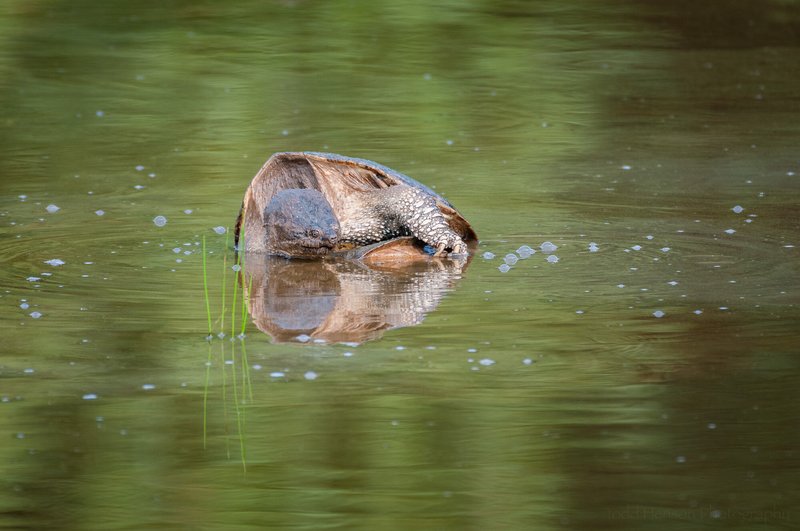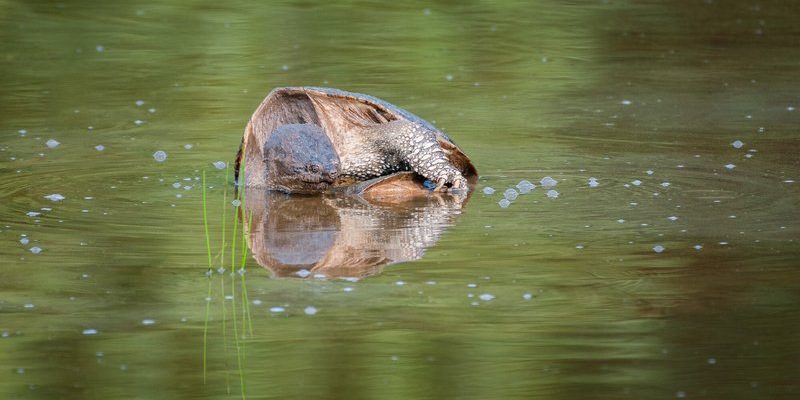
You might be wondering how these turtles find love in murky waters. It’s a bit like dating in a crowded bar—you need to stand out, navigate the crowd, and have a little bit of luck on your side. The reproductive habits of snapping turtles not only highlight their unique biology but also reflect some serious survival strategies. By understanding how they breed and rear their young, we can get a clearer picture of their role in the ecosystem.
Understanding Snapping Turtle Mating Habits
Snapping turtles are known for their strong personalities, and that definitely extends to how they find mates. Typically, snapping turtles reach sexual maturity between 7 to 15 years, depending on the species and environmental factors. This delay might seem long, but it allows them to grow large enough to increase their chances of successful mating.
During the breeding season, which usually kicks off in spring and can last into summer, male snapping turtles become quite eager. They’ll often seek out females in shallow waters, which makes the breeding dance more exciting. Picture a dance floor filled with unpredictability—males can be a bit pushy, using their strong jaws and aggressive behavior to win over potential partners.
Interestingly, these turtles exhibit a unique behavior called courtship, which can involve circling and nipping at the female. It’s their way of saying, “Hey, I’m here!” While this might sound rough, it’s a part of their natural mating ritual. Female snapping turtles have the final say and will choose their partner based on various factors, including size and behavior.
Egg Laying: Finding the Right Spot
After a successful mating season, it’s time for female snapping turtles to focus on one important task: laying eggs. When the time comes, they embark on a journey that looks a little like a treasure hunt. Females will leave the comfort of the water to search for sandy or loose soil, which can be challenging in areas with dense vegetation.
Typically, a female snapping turtle can lay around 20 to 50 eggs in a single nesting season. Once she finds the perfect spot, she digs a hole with her back legs and carefully places her eggs inside. It’s a meticulous process—she’ll cover them with soil to protect them from predators. Here’s the thing: these digging sessions are crucial for their survival. Without finding a suitable nest, the eggs may not make it through the critical incubation period.
Incubation generally lasts about 75 to 90 days, depending on temperature and humidity. Warm, moist conditions are ideal, while cooler temperatures can slow down the development of the embryos. This is quite a delicate balance, and you can see how important the nesting process is for the survival of their young.
Temperature’s Role in Determining Gender
One of the most fascinating aspects of snapping turtle reproduction is how temperature can affect the gender of the hatchlings. Unlike many animals that have chromosomal sex determination, snapping turtles are influenced by environmental conditions. In general, warmer incubation temperatures tend to produce more females, while cooler temperatures lead to males.
This phenomenon raises an interesting question: how might climate change impact snapping turtle populations? With rising temperatures, we might see shifts in gender ratios, which could have long-term effects on breeding patterns and population dynamics. It’s a reminder that the health of these turtles is closely tied to the environment around them.
Hatching and the Journey to Water
Once the eggs are ready to hatch, the little turtles begin to break free from their shells. This is a race against time; as soon as they emerge, they have to make a break for safety—predators love a freshly hatched turtle snack! The hatchlings dig their way up to the surface, and once they’re free, they instinctively head toward water. It’s an impressive journey for such tiny creatures.
The first trip to the water can be perilous. Hatchlings must navigate various hazards, from birds to other predators lurking nearby. It’s a high-stakes situation, where every little decision matters. It might seem daunting, but nature has its way of preparing them. The instinct to head toward the water gives them a fighting chance in a tough world.
Challenges Snapping Turtles Face During Breeding
As resilient as snapping turtles are, they face various challenges when it comes to breeding and raising their young. Habitat loss is a significant issue. Urban development and pollution can destroy nesting sites, making it harder for females to find the perfect spot for their eggs.
Additionally, predators are a constant threat. Raccoons, foxes, and even other turtles can dig up and eat the eggs before they have a chance to hatch. It’s a harsh reality, and conservation efforts are critical to ensuring these hatchlings have a fighting chance.
You might wonder what can be done to help them thrive. Protecting natural habitats, restoring nesting areas, and even using barriers to keep predators away from nests can all make a significant difference. Every little effort counts when it comes to supporting these fascinating creatures.
The Importance of Conservation
Understanding the breeding and reproductive behavior of snapping turtles is crucial for their conservation. By learning more about their mating habits, nesting preferences, and the challenges they face, we can take steps to protect them. Supporting local conservation efforts and spreading awareness about the importance of these turtles can create a positive impact.
You might think of snapping turtles as just another part of the ecosystem, but they play crucial roles in maintaining healthy environments. As both predators and prey, they help regulate populations of various species, contributing to the balance of their ecosystems.
Let’s not forget that their lifecycles hold valuable lessons about resilience and adaptation. By fostering a deeper understanding of their breeding habits, we can ensure that future generations will continue to see these amazing creatures thrive in the wild.
In conclusion, the world of snapping turtles is a rich tapestry of survival tactics and reproductive strategies. From their aggressive courtship rituals to the challenges of hatching and growing up, these turtles have unique ways of navigating life. By valuing and protecting them, we can appreciate not just their beauty but their important role in the ecosystem. With the right knowledge and effort, we can help ensure that snapping turtles will continue to thrive for generations to come.

